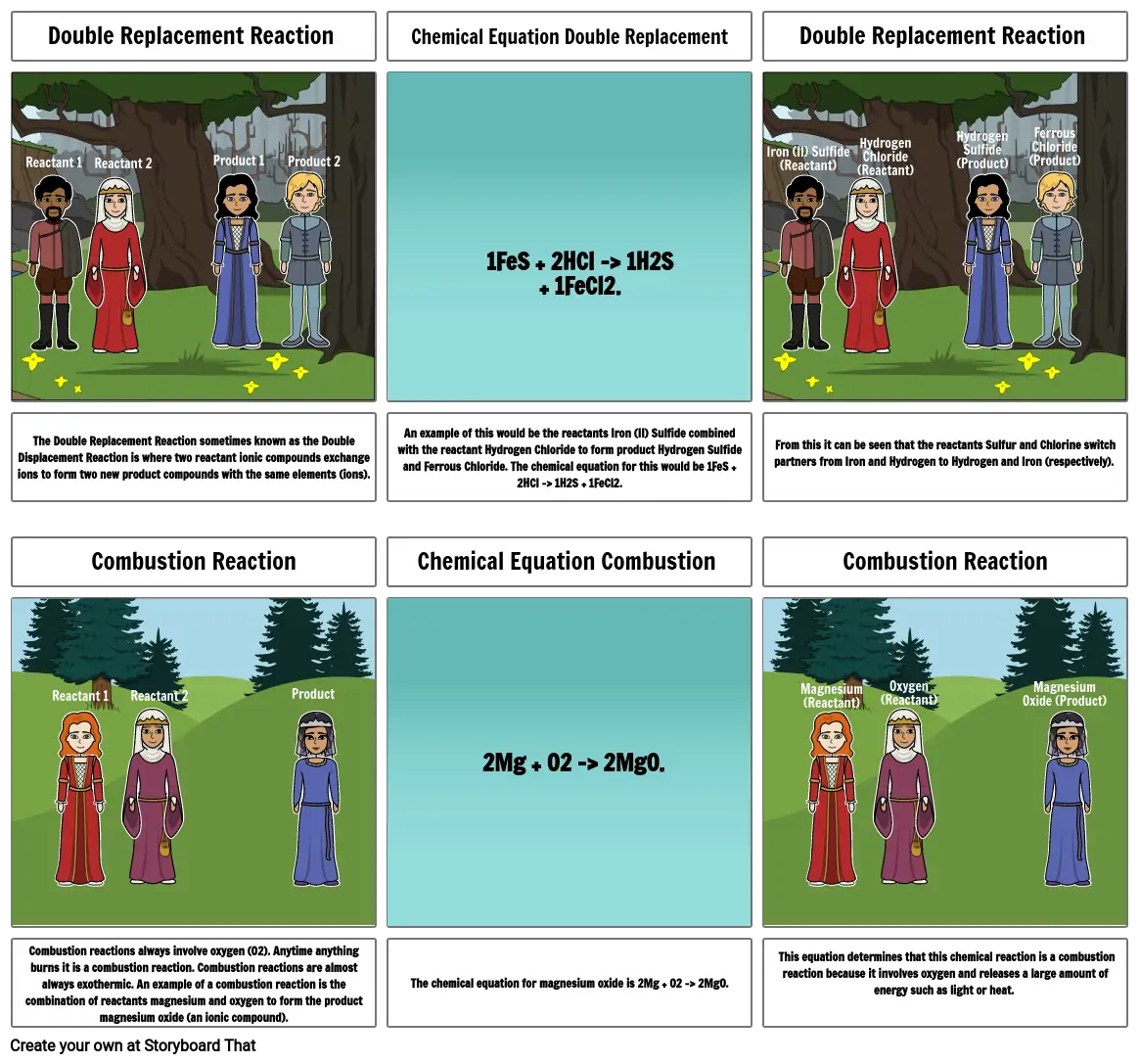Chemistria Part 3

Storyboard Text
- Reactant 1
- Double Replacement Reaction
- Reactant 2
- Product 1
- Product 2
- Chemical Equation Double Replacement
- 1FeS + 2HCl -> 1H2S + 1FeCl2.
- Double Replacement Reaction
- Iron (II) Sulfide (Reactant)
- Hydrogen Chloride (Reactant)
- Hydrogen Sulfide (Product)
- Ferrous Chloride (Product)
- The Double Replacement Reaction sometimes known as the Double Displacement Reaction is where two reactant ionic compounds exchange ions to form two new product compounds with the same elements (ions).
- Combustion Reaction
- Reactant 1
- Reactant 2
- Product
- An example of this would be the reactants Iron (II) Sulfide combined with the reactant Hydrogen Chloride to form product Hydrogen Sulfide and Ferrous Chloride. The chemical equation for this would be 1FeS + 2HCl -> 1H2S + 1FeCl2.
- Chemical Equation Combustion
- From this it can be seen that the reactants Sulfur and Chlorine switch partners from Iron and Hydrogen to Hydrogen and Iron (respectively).
- Combustion Reaction
- Magnesium (Reactant)
- Oxygen (Reactant)
- Magnesium Oxide (Product)
- Combustion reactions always involve oxygen (O2). Anytime anything burns it is a combustion reaction. Combustion reactions are almost always exothermic. An example of a combustion reaction is the combination of reactants magnesium and oxygen to form the product magnesium oxide (an ionic compound).
- The chemical equation for magnesium oxide is 2Mg + O2 -> 2MgO.
- 2Mg + O2 -> 2MgO.
- This equation determines that this chemical reaction is a combustion reaction because it involves oxygen and releases a large amount of energy such as light or heat.
Over 30 Million Storyboards Created

